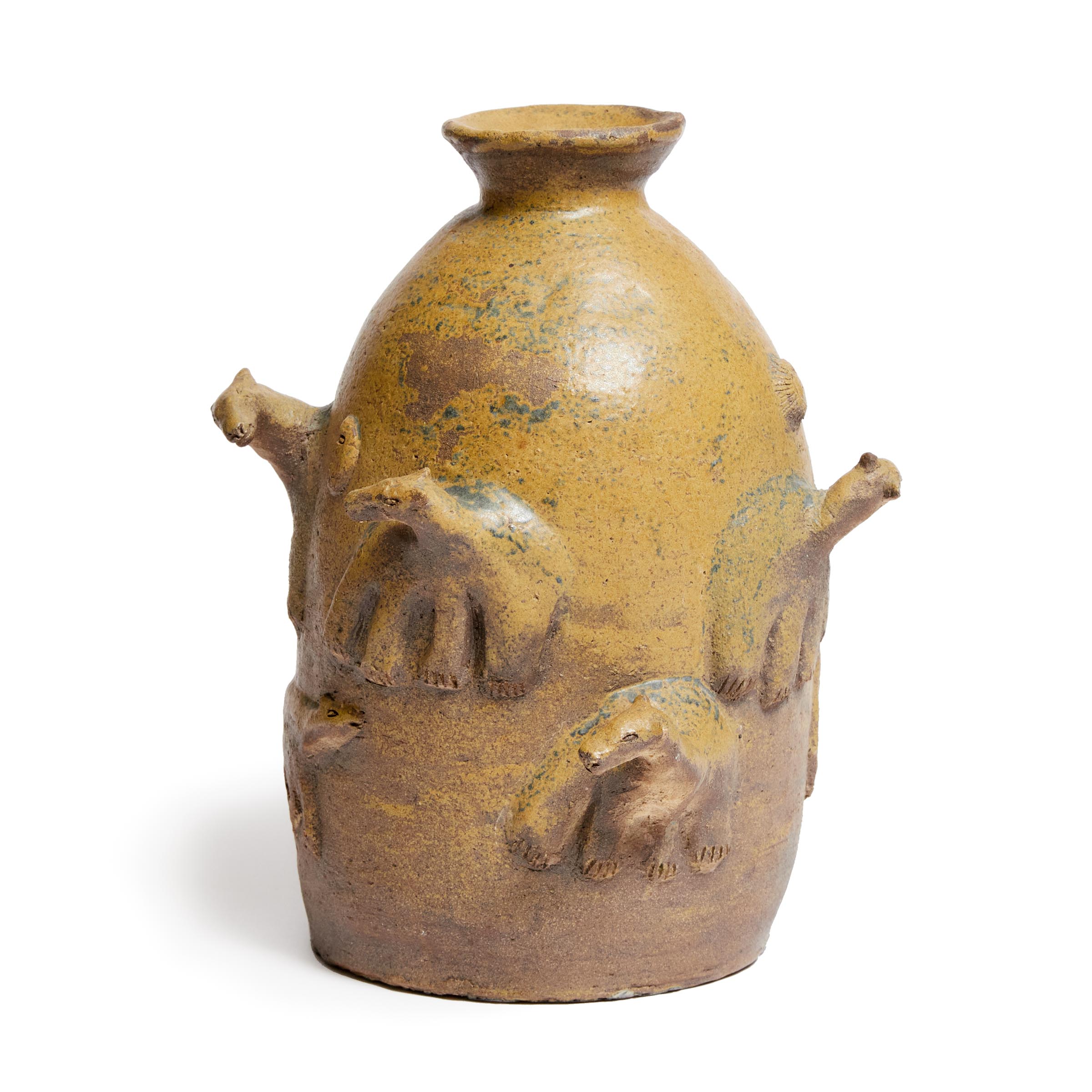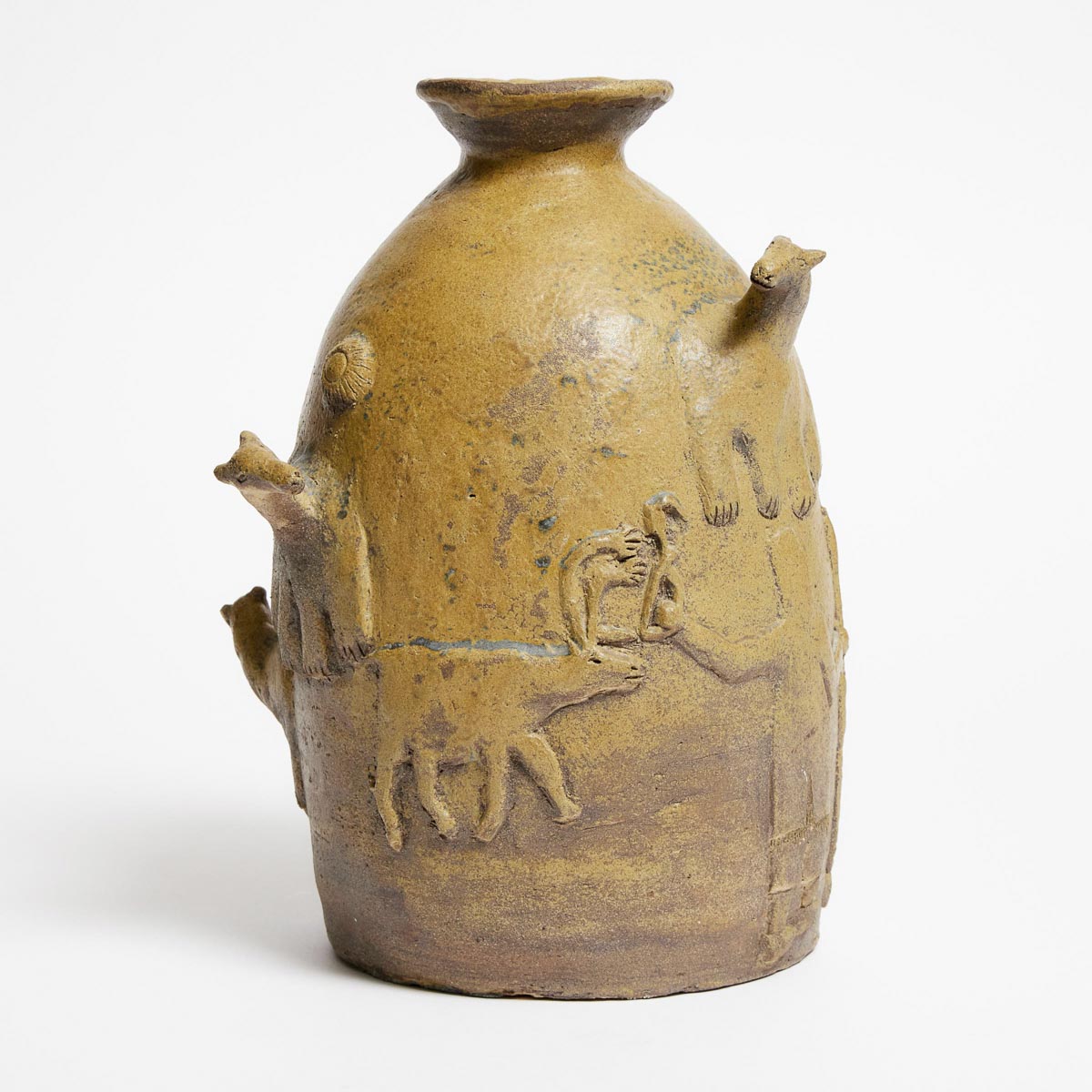Lot 127
Donat Anawak ᐊᓇᑯᐊ (1920-1990)

Provenance:
Private Collection, Toronto, ON
Note:
Some academics have argued that ceramics may have an early historic precedent in the Arctic dating back over 1000 years, later disappearing in all but the western-most reaches of Alaska. In 1963, as part of the expansion of the northern arts and crafts economic initiative at Kangiqliniq (Rankin Inlet), ceramics were re-introduced by Quebecois ceramicist Claude Grenier.
The idea of ceramics intrigued artists in Kangigliniq: the medium had the appeal of softness, immediacy, and produced no stone dust, which made working indoors possible through long winters. Early attempts at wheel-thrown pottery would be abandoned in favour of static building, with the artists free-handing sculptural forms.
The early 1960s were a period of artistic excitement and activity in Kangiqliniq. Many important artists including John Tiktak, George Arluk and John Kavik were actively experimenting with sculpture or drawing. Ceramics were also an important part of that moment.
Artist Shary Boyle participated in a collaborative show with key contemporary Kangiqliniq artists at the Esker Foundation in Calgary, in 2017. Boyle said of the early Kangiqliniq ceramic artists: “they were on fire, and clay afforded an elastic pliability that matched the speed of their imagination...” (1)
The present work exhibits a joyously off-kilter form and mossy glaze. Taking advantage of the roughly cylindrical format, the hunting or herding scene depicted contains both day and night, expressed by an opposing sun and moon.
1. Boyle, Shary. “Keeping Up with the Ceramic Artists of Kangiqliniq.” Inuit Art Quarterly. July 29, 2020. https://www.inuitartfoundation.org/iaq-online/keeping-up-with-the-ceramic-artists-of-kangiqliniq.





